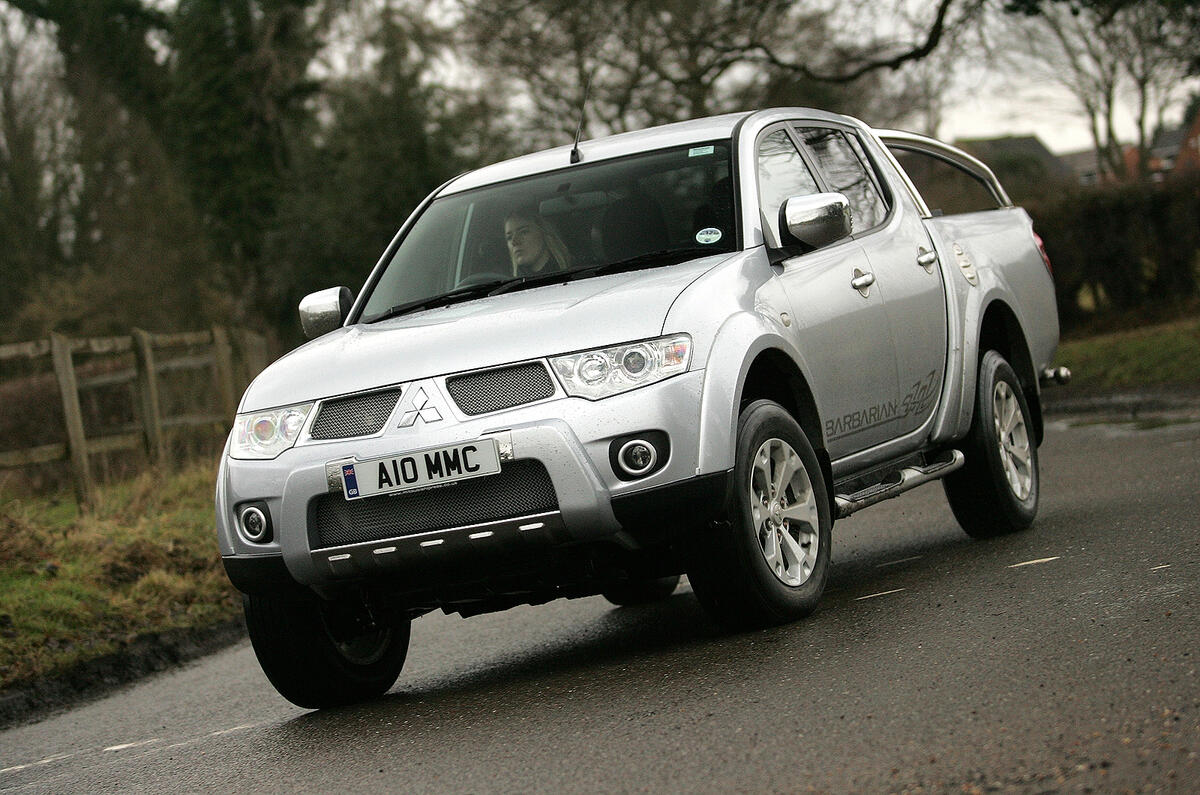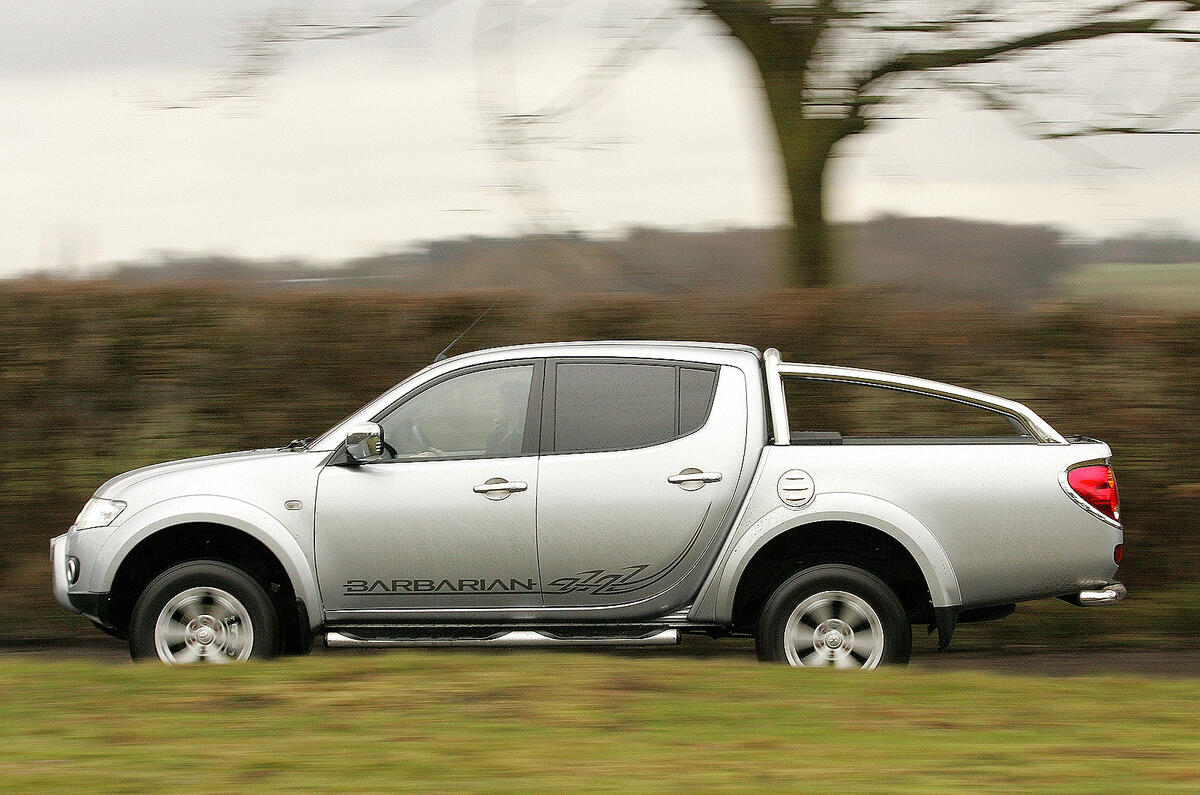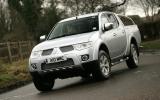The growth in popularity of the long cab pick-up in the UK can largely be attributed to the L200. It is still among the best-selling in the UK, and proves that big commercial vehicles can tick the box as a work hauler and a passenger car.
Tough-sounding models like the Animal, Warrior and Barbarian took the L200 off of the building site, and into the supermarket car park with relatively luxurious trim and car-like equipment.
Two-door, two seat Single Cab and two-door, four-seat Club Cab configurations are available, but it's the more comfortable, four-door Double Cab variant that's of most interest.
Notably, the range-topping Animal version of the double-cab is no more, replaced by the range-topping Barbarian and Walkinshaw (as in the late Tom Walkinshaw), which now come with a 175bhp derivative of the 2.5-litre turbodiesel engine and the option of a five-speed automatic gearbox as tested (a manual is standard).
With an auto ‘box, 0-62mph is covered in 13sec while the manual reaches the benchmark in a surprisingly-brisk 12.2sec. CO2 emissions are rated at 233 and 208g/km respectively. 4Work, 4Life, Warrior and Trojan models pack a rather more pedestrian 134bhp from the in-line four-cylinder, which makes the models good for a 0-62mph in around 15sec. Emissions range from 199 to 223g/km, depending on body configuration.
Despite the trappings of an SUV, the L200 is still fairly utilitarian - it is, at its heart, a rugged workhorse and appears on Mitsubishi's commercial vehicle price list. That means you get leaf spring suspension, a ladder frame chassis and a one-tonne payload. It'll tow 2700kg too.






















